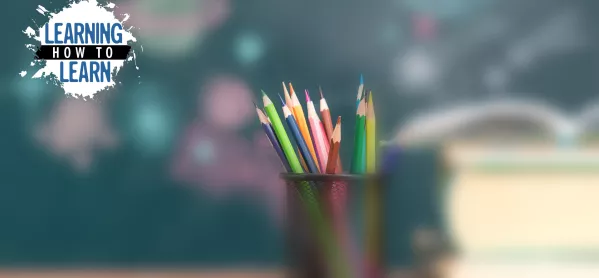Learn to learn: the power of recall
Share
Learn to learn: the power of recall
If we want pupils to remember something, we now know that regularly recalling it is key.
Recall means bringing an idea back to mind. Actively recalling key ideas has been shown to be a great way to help students understand those ideas and to do better on tests.
To do recall, the student should carefully read a page in a book, underlining a key word or two (not too much!) and making notes in the margin if necessary. Then, the student should look away from the page and see if they can recall the key ideas on the page.
This article is part of a series by Professor Barbara Oakley called Learning How To Learn (L2L). A list of all the chapters will be available at this link from 16 April.
Recalling the key idea on a page helps pull out the dendritic spines, which are small protusions that help build connections between the brain’s neurons (the cells in the brain responsible for receiving sensory input from the external world).
Pulling the key idea from the student’s own mind is the important thing. Recall is what makes the dendritic spines start to sprout. Just passively reading or rereading a page, or underlining parts of the page, doesn’t help students form those all-important new brain links.
Fit for purpose
Some people need more practice and repetition than others to get a concept and create brain links. That’s perfectly OK - in fact, sometimes students can learn more deeply if it takes them more time to grasp a concept.
Nobel prize winner Santiago Ramón y Cajal was a slow learner. He often wished he were “smarter”. He stumbled over his words and forgot details.
But his research on neurons showed him that he could still learn. By working to learn maths and science, he gradually changed his abilities in those areas.
He might not have become smarter but he became much more knowledgeable.
Through slow, steady practice, he made new links, changing the structure of his brain. That’s how he gradually went from young troublemaker to famous scientist!
To learn more about this area, watch the video below.
This article is part of a series by Professor Barbara Oakley called Learning How To Learn (L2L). A list of all the chapters will be available at this link from 16 April.
Notes by Professor Barbara Oakley and ESIC Business and Marketing School. Videos reproduced with kind permission of the Arizona State University and Professor Barbara Oakley.
For more information, see Learning How to Learn: How to Succeed in School Without Spending All Your Time Studying; A Guide for Kids and Teens.




